Recent years have not been kind to Texas rivers and the folks who enjoy them. Extended drought and a string of extra-hot summers have threatened the idyllic pastime of lazing away on a river, floating on a tube, or paddling a canoe or kayak. The Lower Guadalupe River, the 20 river miles below Canyon Dam, is the exception. Canyon Lake, which feeds the river, was at 47% capacity in April—the lowest level since the reservoir first began to fill 60 years ago. Yet, the lake still passes enough water into the Lower Guadalupe for floating, tubing, swimming, and fishing—even when the nearby Comal and San Marcos springs have slowed to a trickle.
This stretch of the Lower Guadalupe resembles an amusement park during its summer peak. The 60-degree water, the dam, and the location—14 miles northwest of New Braunfels and just west of Interstate 35—attract tens of thousands of visitors on Saturdays and holiday weekends during the summer.
The rest of the year, this is simply the most splendid river corridor in the state. The narrow valley is bordered by towering limestone cliffs and sheer bluffs where hawks and buzzards lazily circle. Hugging the riverbanks are bald cypress—the apex tree of the Lower Guadalupe—ancient oaks, massive pecans, silver-leafed sycamores, and stately elms.
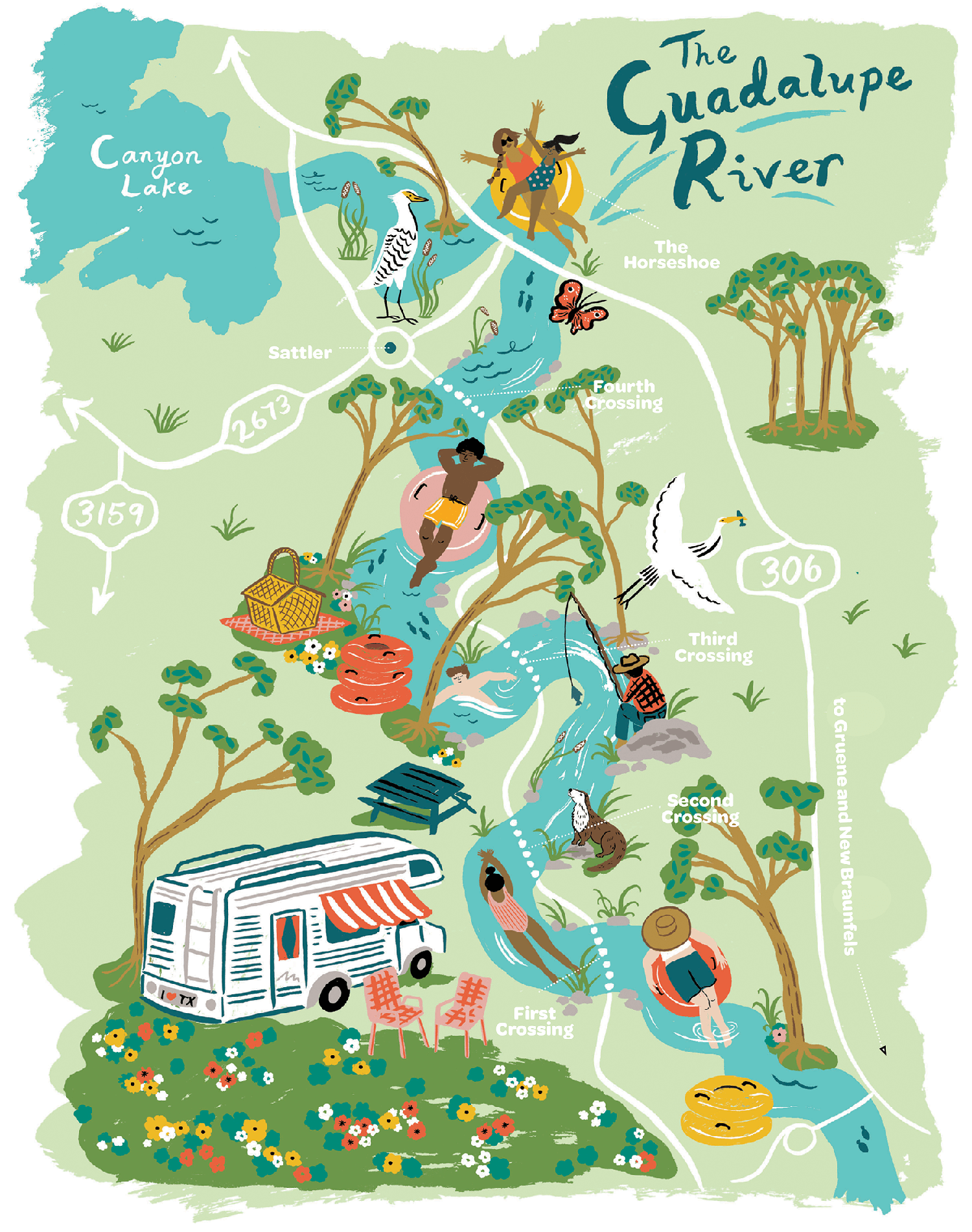
Photo credit: Debbie Powell
Whatever the season, all those RVs lined along the riverbank or folks caught in a tube jam on the Horseshoe Loop are a testament to one truth: This is the coolest place to be outdoors for 350 miles in any direction.
Completed by the U.S. Army Corps of Engineers for flood control and water supply in the 1960s, Canyon Dam had the unintended consequence of a steady, controllable flow of 60-degree water coming off the bottom of the lake. This spurred more vacation homes, tubing concessions, and campgrounds along River Road. By the end of the 1970s, the Lower Guadalupe had become the alternative tubing destination to the Comal River in New Braunfels, with far more floatable river miles, all of it outside the city limits and its more stringent rules and restrictions.
By the 1980s, crowds had become large enough, constant enough, and rowdy enough for Comal County voters to approve the creation of the Water Oriented Recreation District, which provides traffic control and cleanup crews funded by a user tax. “A big reason I took this job was because of this river,” WORD general manager Mike Dussere says. “It’s absolutely gorgeous. And nothing is more relaxing in 105-degree heat than getting into a river that’s cooled from the bottom of a 120-foot-deep lake.”
Over the past 25 years, the Lower Guadalupe has gone full RV, and for good reason: Even by the water, July and August nights are too hot to sleep comfortably without AC, making a climate-
controlled land yacht a more appealing option than a tent.
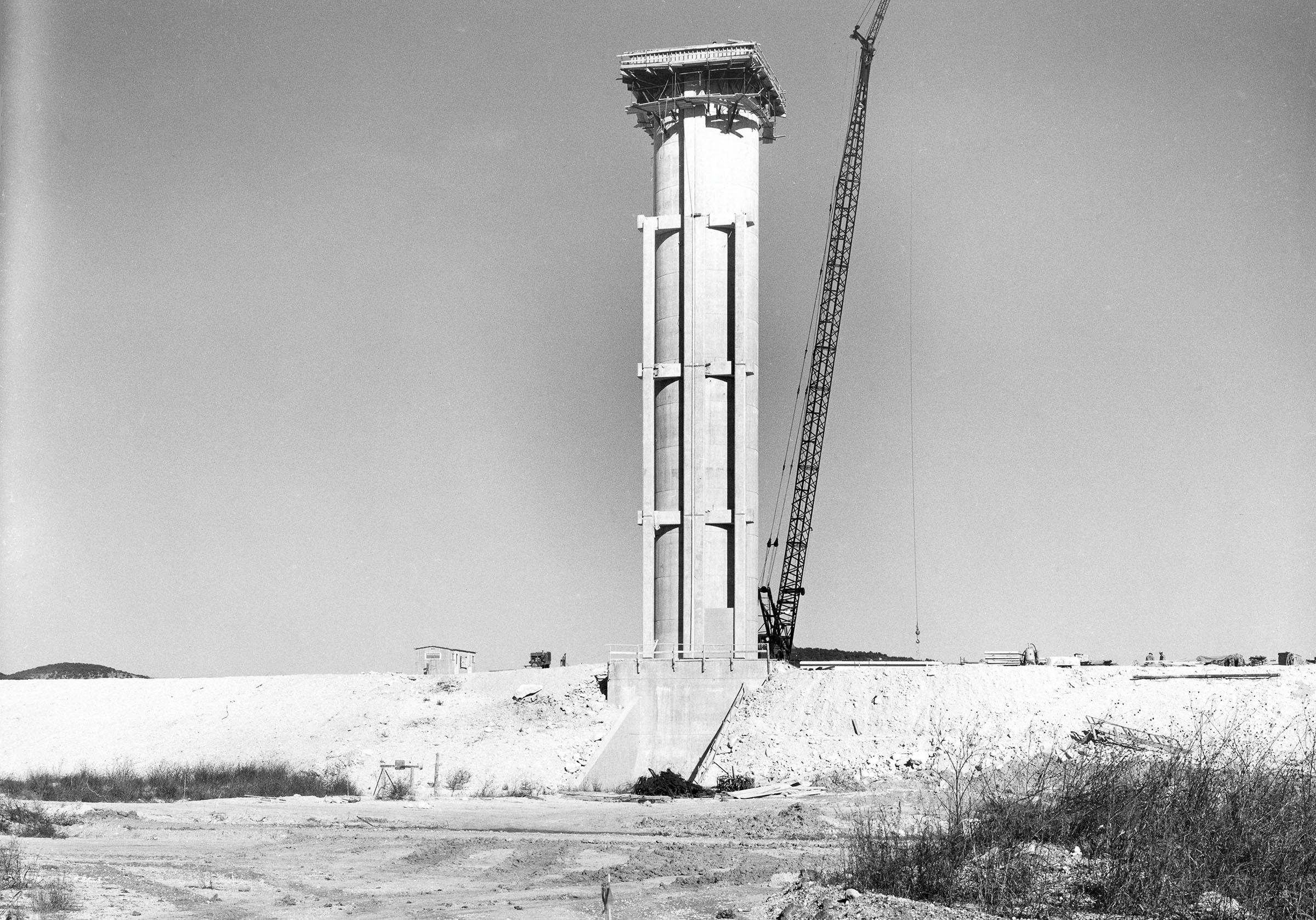
Photo Credit: U.S. Army Corps of Engineers
Lower Guad: Canyon Lake/Gorge
1. Canyon Dam
Thank human engineering, specifically the mile-and-a-quarter-long Canyon Dam, for the creation of Canyon Lake. The world’s largest earthen dam when it was completed in 1964, Canyon Dam reduced the incidence of flooding in the river basin downstream and led to structures being built right on the water, creating the recreational strip of river.
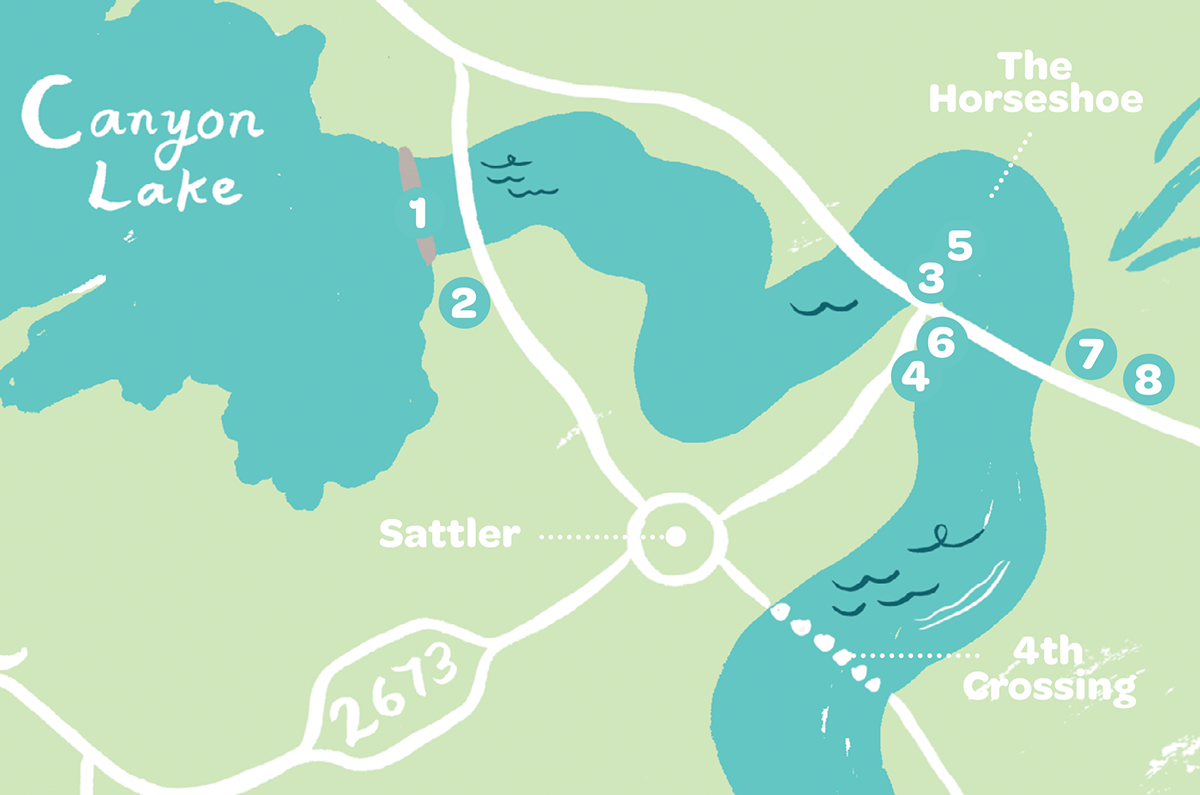
Photo Credit: Debbie Powell
2. Canyon Lake Gorge
In July 2002, 34 inches of rain fell in the Upper Guadalupe watershed in six days, filling Canyon Lake to the brim before pushing a torrent of water into the lake’s spillway for the first time since the reservoir was filled. The storm water, flowing at a rate of 67,000 cubic feet per second, carved a canyon out of a steep hillside, ripping out the topsoil and exposing ancient limestone with dinosaur tracks, fossilized sea urchins, and ocean ripples more than 110 million years old.
Get a closer perspective of the gorge at the 64-acre Canyon Lake Gorge Park operated by the Guadalupe-Blanco River Authority, just around the bend on South Access Road. The visitor center staff are knowledgeable and helpful, and the video of the 2002 flood is riveting. The centerpiece of the park is the Overlook Trail along the north side of the gorge, a 2-mile round-trip hike with scenic overlooks and interpretive exhibits. Turquoise pools and secret waterfalls are visible from the trail. Trail access fee: adults $5; under 12 free. Guided tours: $15 for 90 minutes; $20 for three hours; $5 for students. canyongorgetours.com
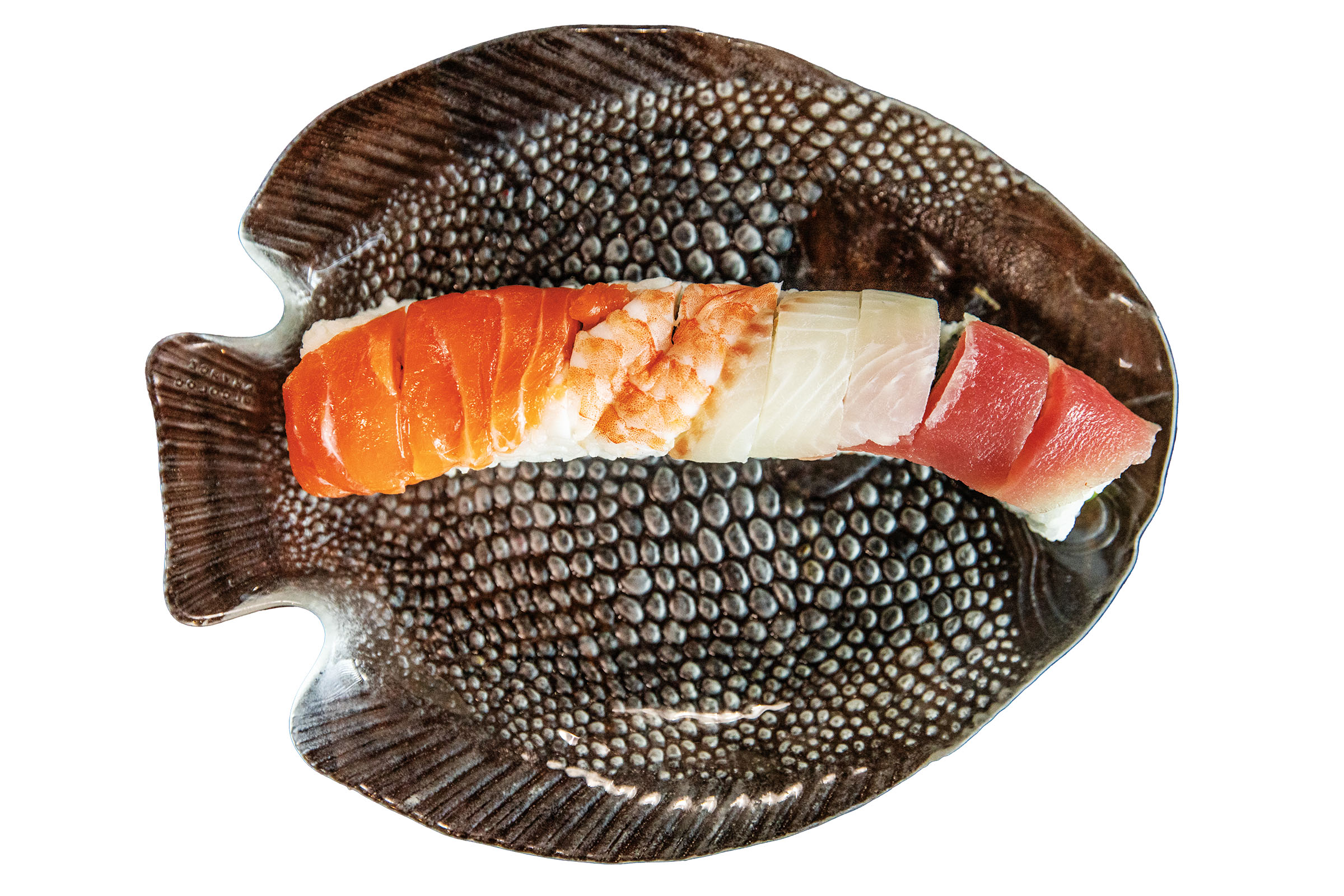
Photo Credits: Kenny Braun
3. Andy’s River Toobs
Day tubers congregate at the Horseshoe Loop near the town of Sattler while others downstream float shorter segments of the 12 miles of river shadowed by River Road. Andy’s has 1,000 rental tubes this season, up from 600 in 2024. “We can sell out on Saturdays as early as 11 a.m.,” warns Anna Hettinger, who manages Andy’s with her two sisters. A rental tube, parking, and shuttle costs $24. floattheguadalupe.com
4. Pier Sushi
Sushi, specialty rolls, and fried rice and noodle entrees are on the menu at this former food truck turned brick-and-mortar restaurant. On Friday and Saturday nights, the eatery offers Hibachi Under the Stars with steak, chicken, shrimp, vegetables, fried rice, and appetizers for $45 per person. piersushi.com
5. Jay & Diane’s Horseshoe Grill
This walk-up stand by the FM 306 tubing exit is the go-to burger destination around the Horseshoe. Be sure to order the fried okra. 12020 FM306, Canyon Lake
6. River Rose Tavern
A comfy bar with a dog-friendly patio, this tavern serves burgers, salads, fried and grilled chicken, and craft cocktails. On weekends, bands play on a small stage.
theriverrosetavern.com
7. Whitewater Amphitheater
Located on the east bank of the river by the FM 306 exit, Whitewater Amphitheater started as a tubing concession and has grown into an open-air concert facility that can hold 5,600 fans for big-name acts like The Head and the Heart (June 14) and Blues Traveler and the Gin Blossoms (Sept. 6). For the best sightlines, pony up for a reserved seat in the right wing. Traffic jams are the norm before and after events, but A-list headliners and the riverbank setting under the trees make up for it. whitewaterrocks.com
8. Camp Fimfo
Pretend you’re back at summer camp at this 450-acre family resort that opened in 2021. The grounds feature two pools, a water playground, two waterslides, mini golf, hot tubs, pickleball, sand volleyball, and a swimming hole with a waterfall. Hosted crafts, games, and workshops are scheduled throughout the day. The resort is also home to the Cliff Carver: Texas’ first and only alpine coaster. The gravity sled takes one or two people on a 10-minute thrill ride and must be booked in advance for $22. Cabins start at $300 per night for 2-12 people. Camping and RV pads are also available. campfimfo.com
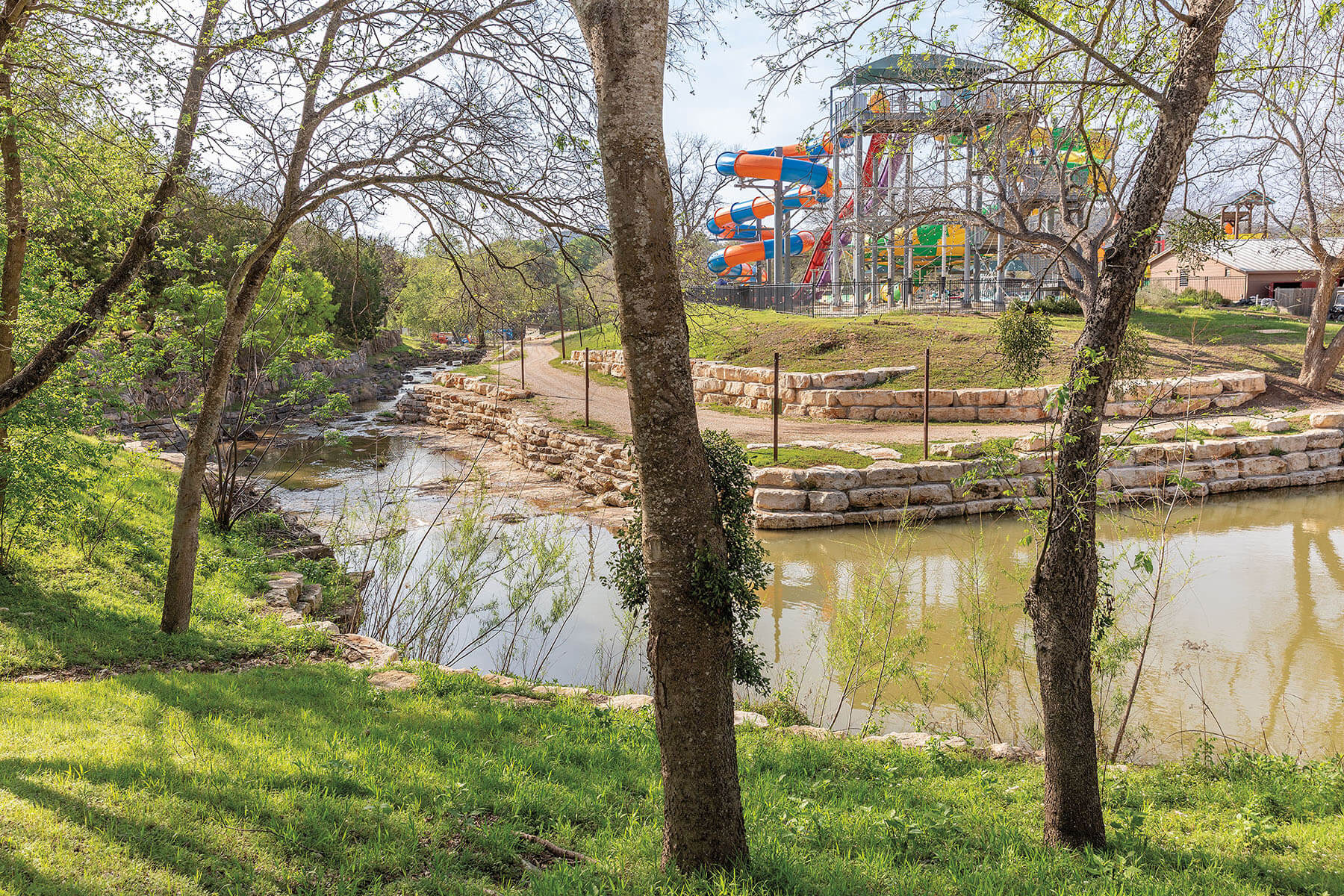
Photo Credits: Kenny Braun
Middle Lower Guad: Between 3rd and 4th crossing
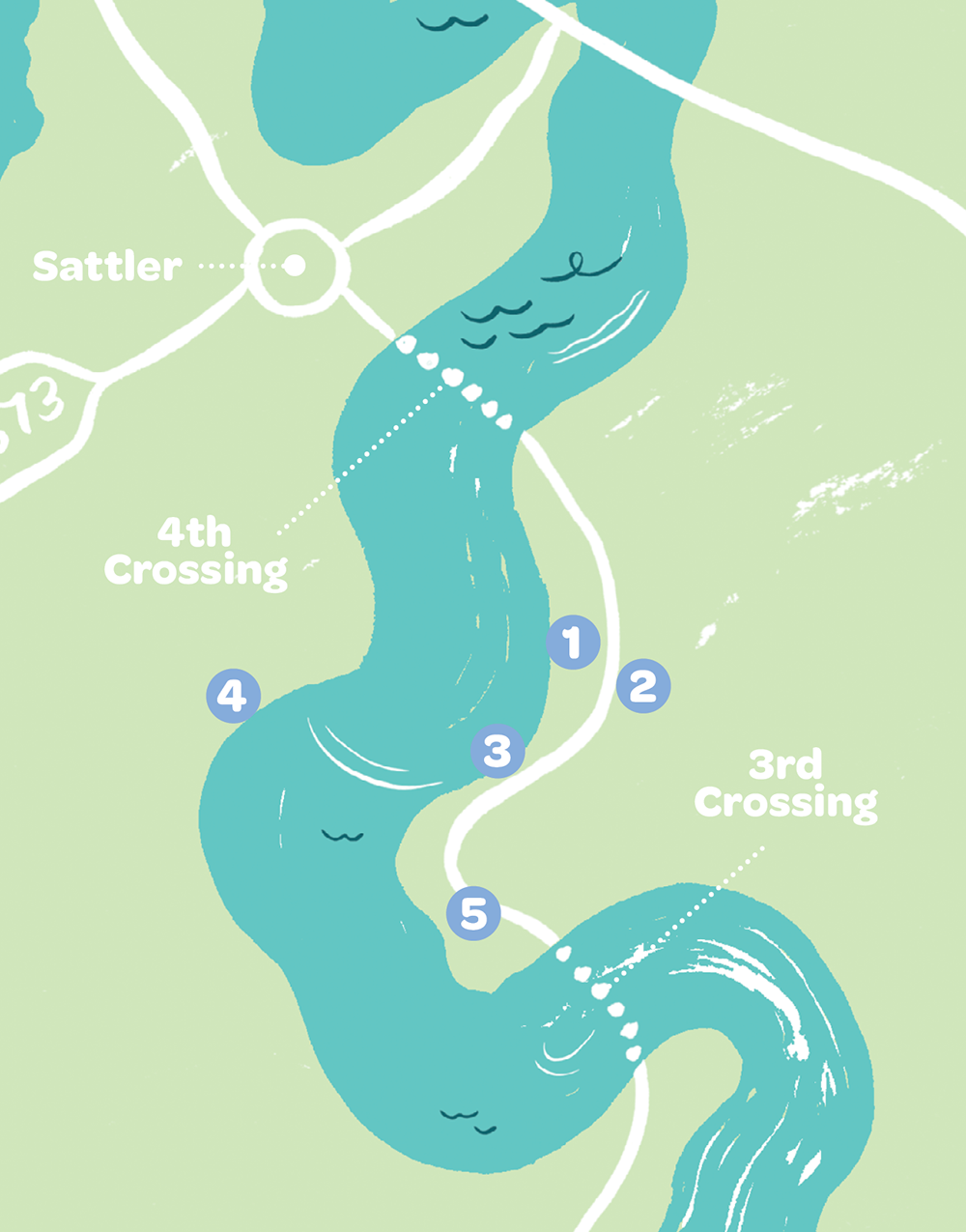
Photo Credit: Debbie Powell
1. Lazy L&L Campground
Operating since 1972, this family-focused campground sits on 25 acres of prime riverfront real estate. Along with tube, raft, and kayak rentals, there’s a camp store that sells everything from firewood to snacks. On weekends from Memorial Day through mid-August, the campground hosts live music and food trucks. Cabins start at $175/night for up to four people. Tents start at $60/night. RV sites start at $75/night. lazylandl.com
2. Tipis on the Guadalupe
After tubing the river, get your glamp on in an air-conditioned tipi. These lodgings downstream from Sattler offer three queen beds, a kitchenette, and access to a fire pit to roast marshmallows and gaze at the stars. Of note: The bathrooms are a short walk away. Tipis start at $118/night.
calmwaterrentals.com
3. Jacobs Creek School Teacherage
Constructed in 1867 as a residence for teachers, one of several built around Comal County, Jacobs Creek School Teacherage was little more than a pile of rubble when it was restored in the 1970s. It was recognized by the Texas Historical Commission in 2017. 12794 River Road, New Braunfels
4. Little Ponderosa River Outfitters
You can’t miss the big blue barn or yellow signs that mark this tubing, rafting, and kayaking outfitter. A veteran- and family-owned business, Little Ponderosa also has a camp store featuring essentials like sunscreen, sun hats, ice, and drinks. littleponderosaoutfitters.com
5. Meckel’s Landing at Rocky Beach
Also owned by the folks behind Lazy L&L campground, Meckel’s Landing at Rocky Beach caters to tubers, campers, and anglers with fishing supplies, picnic tables, and a convenience store that sells beer and wine. Day passes: adults $10, children $5.
meckelslandingnbtx.com
Lower lower Guad: between 1st and 3rd crossing
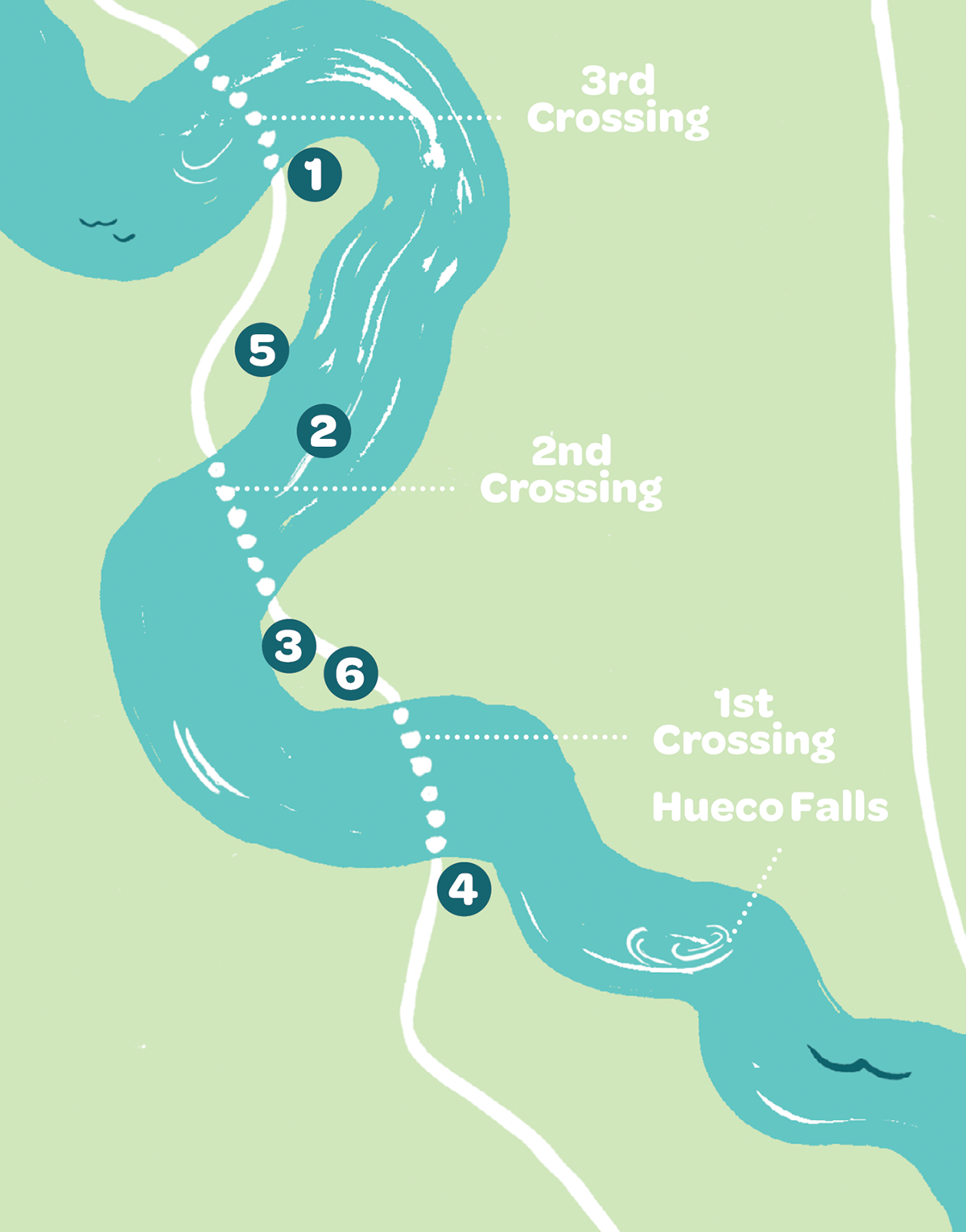
Photo Credit: Debbie Powell
1. Mountain Breeze
Established in 1951, Mountain Breeze is one of the largest properties on this section of the river. The campground rents tubes, floats, and stand-up paddleboards and offers live music every Saturday night in the summer. The on-site eatery, Fat Bottom Grill, serves burgers, sandwiches, and beer-battered fries. RV sites start at $35 per person/night. Tent sites are $25 per adult/night; ages 7-12 are $15/night; kids under 6 are free. mountainbreezecampground.com
2. The Chute
The biggest water feature on the Lower Guadalupe besides the Class III Hueco Falls rapid is The Chute, a swift-flowing 200-yard narrow limestone channel between the Third Crossing and Second Crossing. Even at low flow rates, The Chute promises a decent thrill ride. Serious tubers walk back up to the start and spend all day running The Chute, making this one of the busiest spots on the river.
3. Rockin’ R Riverbank
Below Second Crossing, look for the “Hey Y’all” sign: That’s the Rockin’ R Riverbank. An open-air beer bar that encompasses both sides of the road recalls the Guadalupe before AC. It’s also the departure point for a three-quarter-mile tubing run to Rockin’ R’s Huaco Raft’s location by First Crossing. rockinr.com
4. Camp Huaco Springs
This property on 30 acres shadowing the river to Slumber Falls includes a camp store, shaded tent sites, primitive camping, electric camping, showers and restrooms, and full hookups for 75 RVs. The biggest asset is its proximity to Hueco Falls, the largest rapid on the Lower Guadalupe with Class III whitewater status. Cabins start at $190/night. RV pads start at $90/night. camphuacosprings.com
5. Lone Star Float House
With a bar and patio, this is the go-to eatery on this part of the river. It serves half-pound burgers, veggie burgers, nachos, sandwiches, salads, veggie offerings, and Frito pie and features live bands on summer Sunday afternoons. lonestarfloathouse.com
6. KL Ranch on the River
This legacy camping and RV enterprise was a working cattle ranch before attracting tourists back in the 1950s. Extremely well-shaded with cypress, pecan, oak, and sycamore trees draped with Spanish moss, infrastructure at KL Ranch on the River is kept to a minimum on the 7 acres with 63 campsites—which explains the presence of herons, geese, deer, turkey vultures, and other wildlife. Camping starts at $68/night. RV sites start at $75/night. kl-river.com
By Joe Nick Patoski
Photographs by Kenny Braun
Illustrations by Debbie Powell
From the June 2025 issue